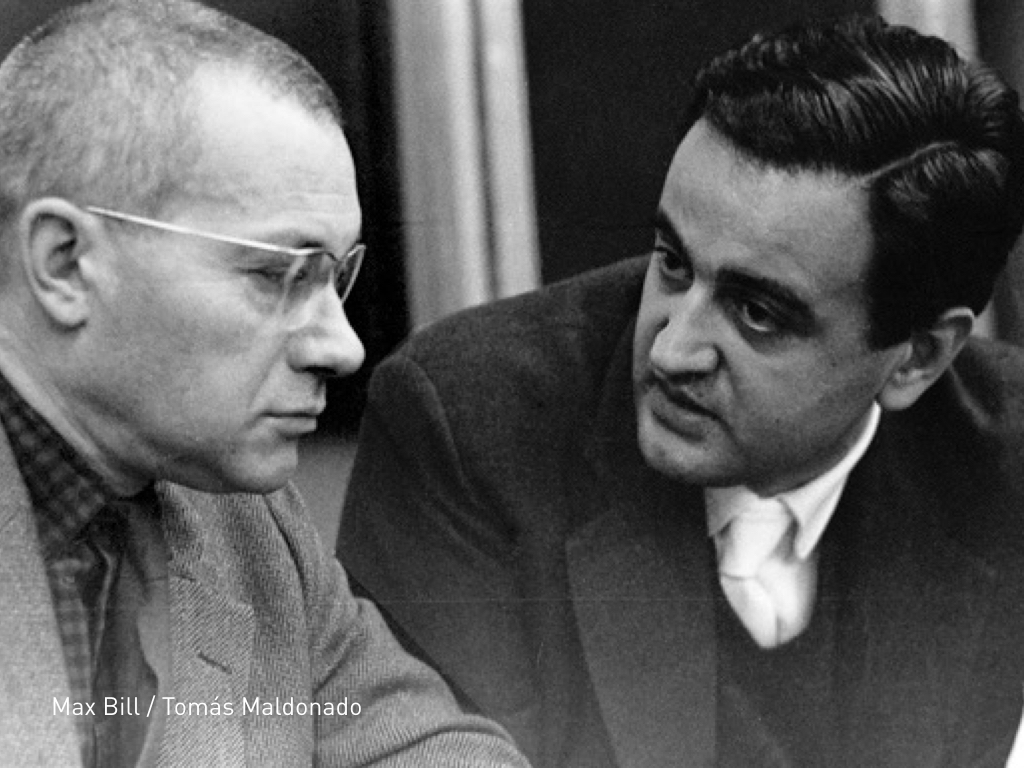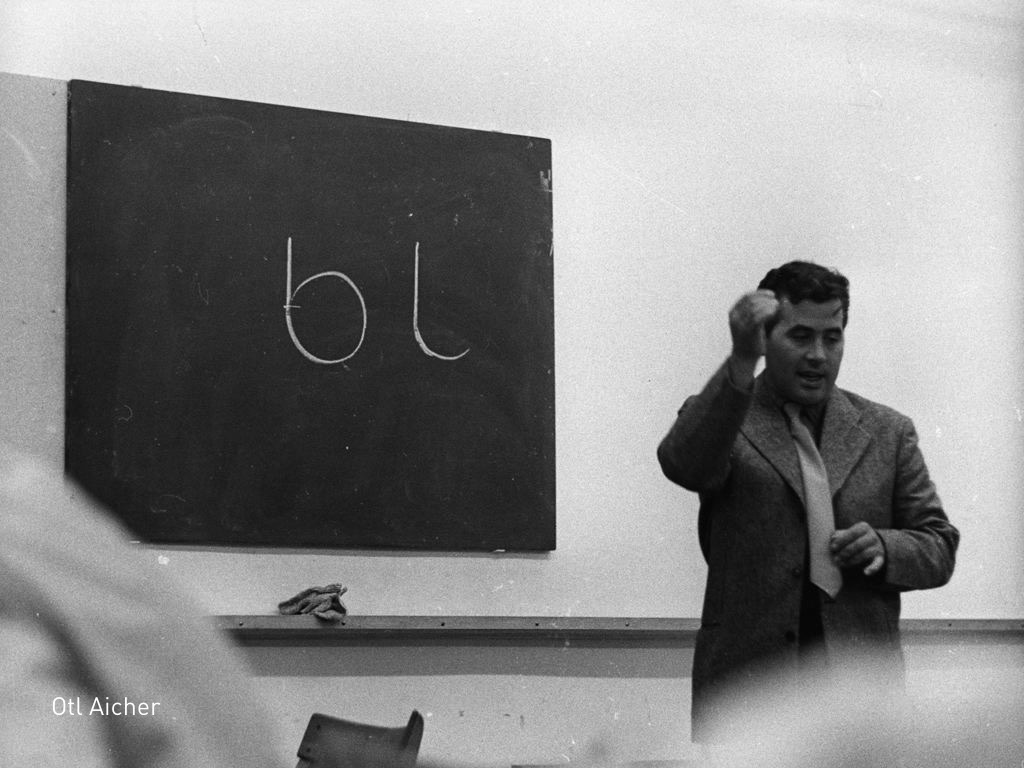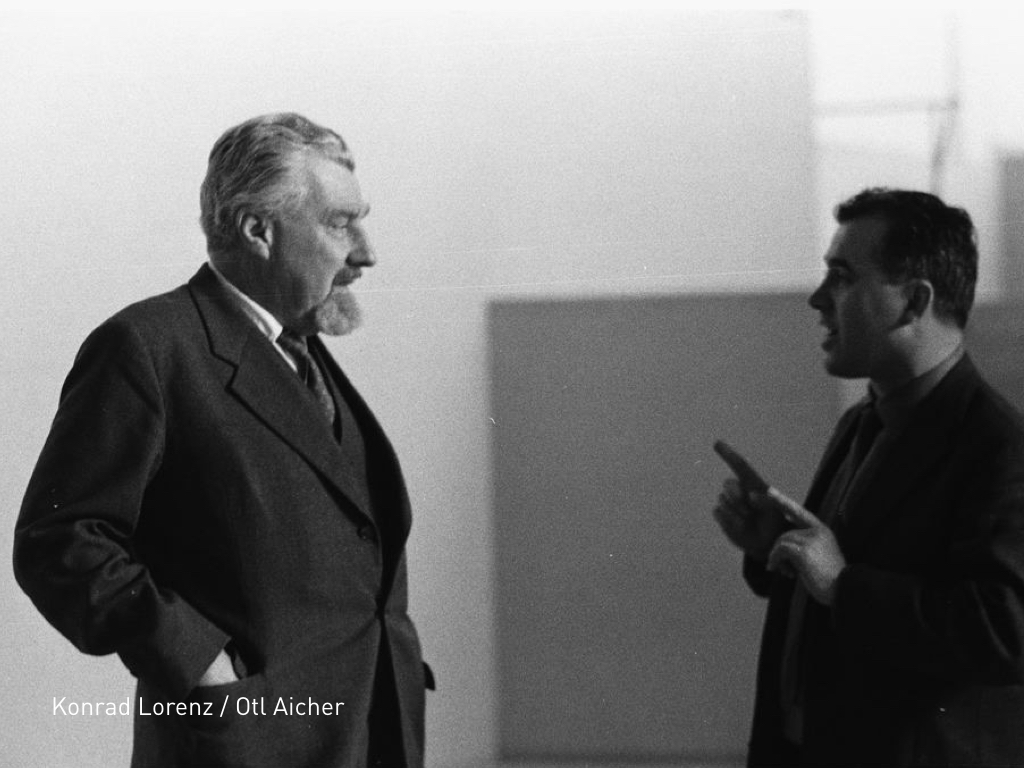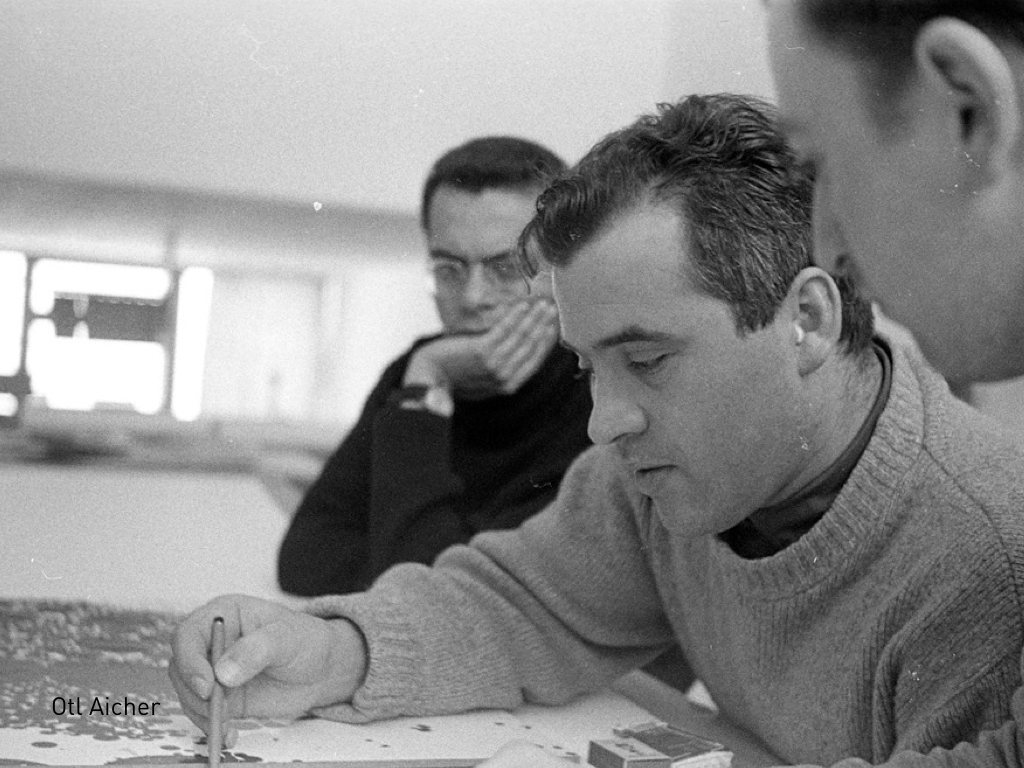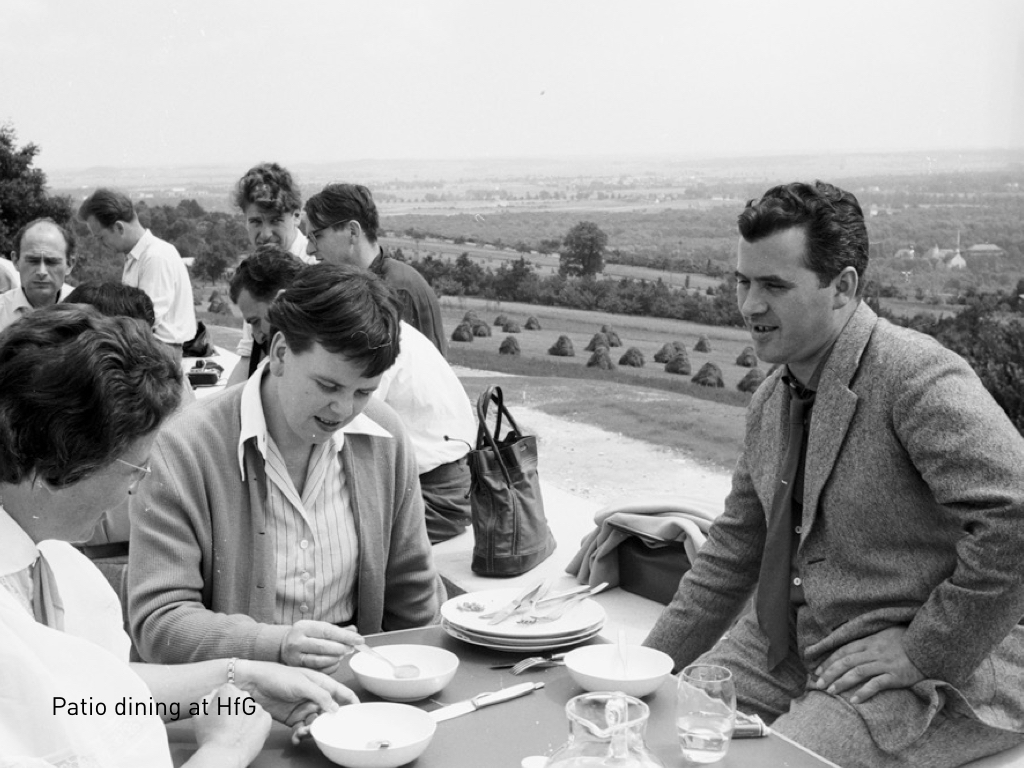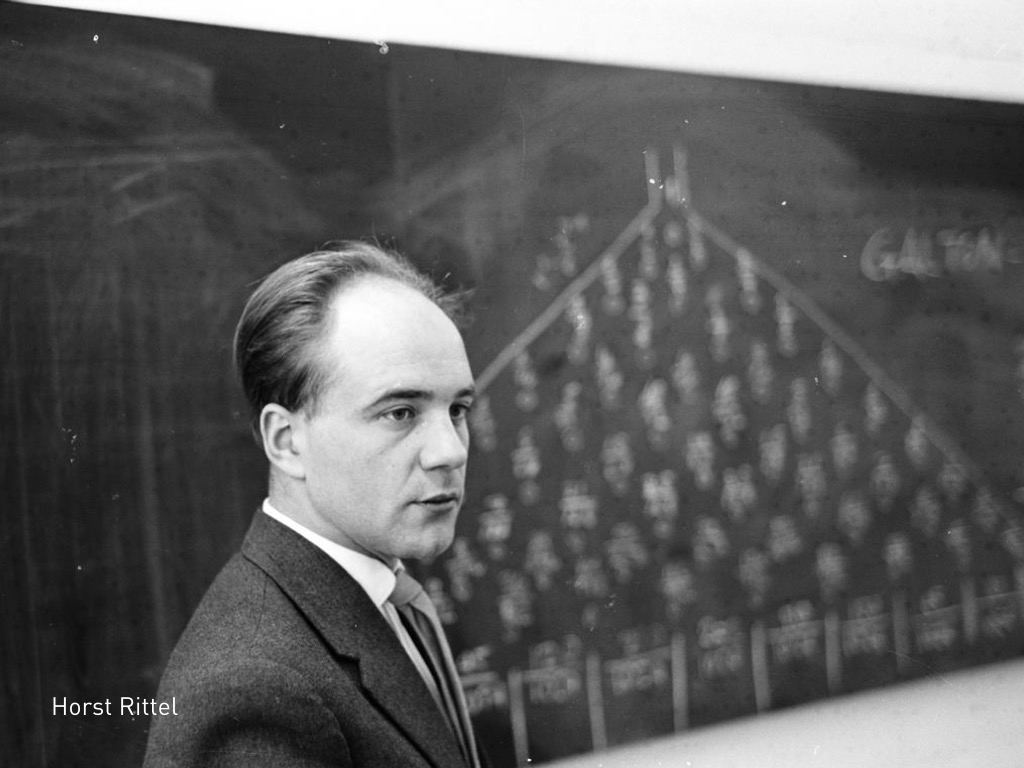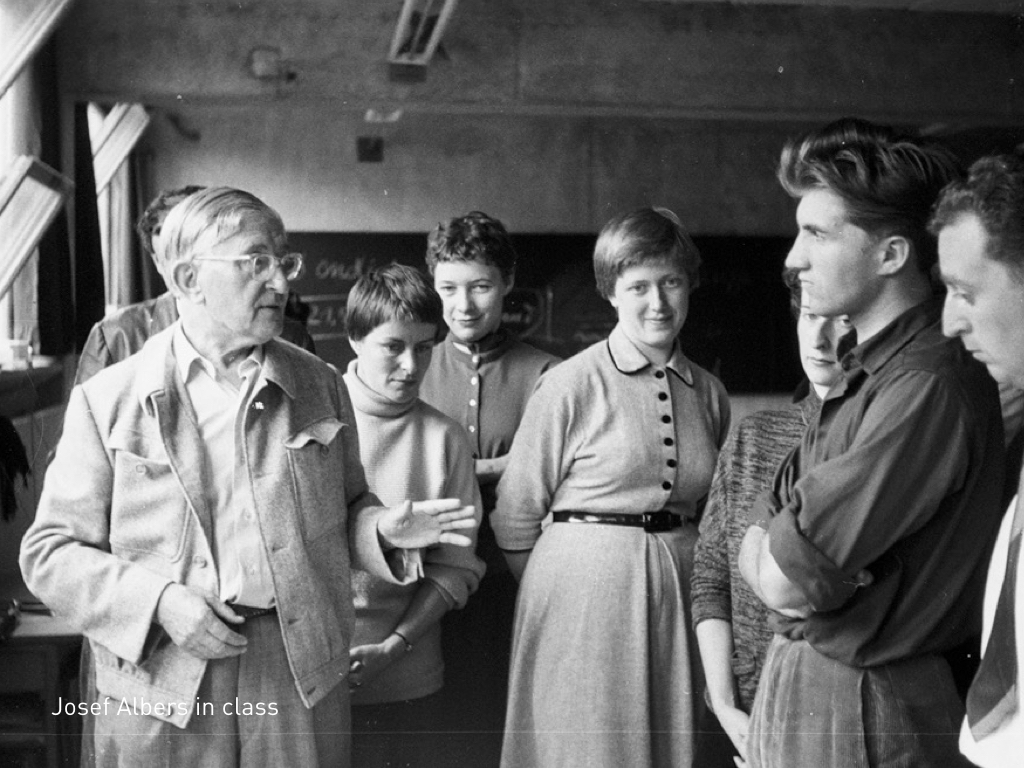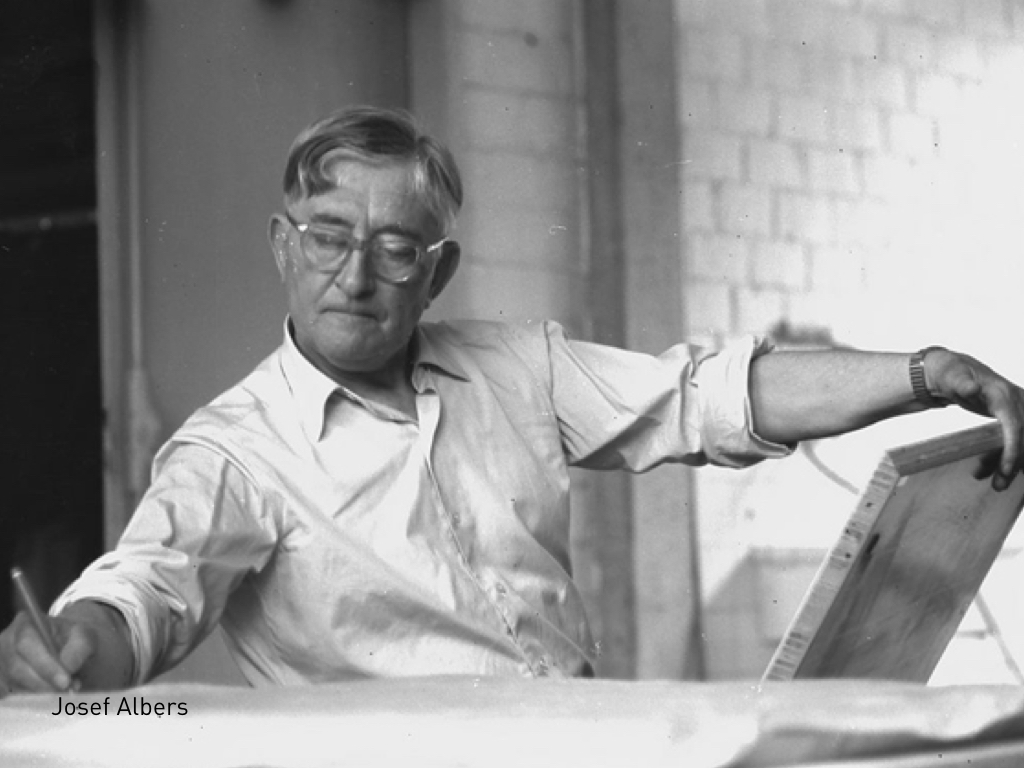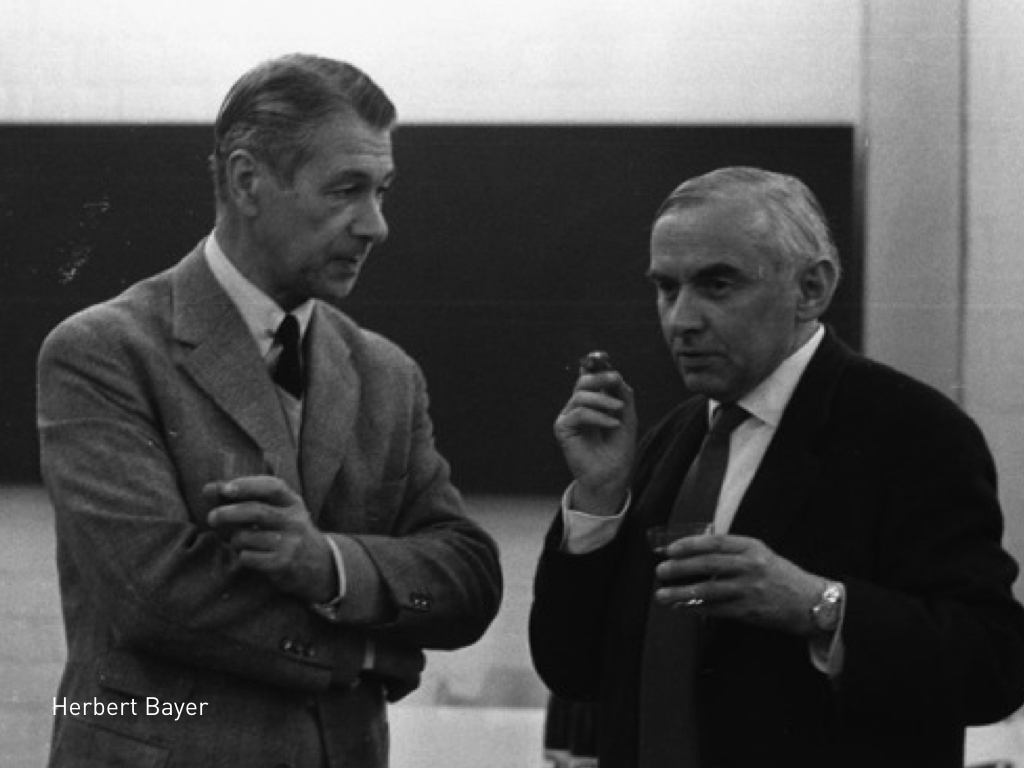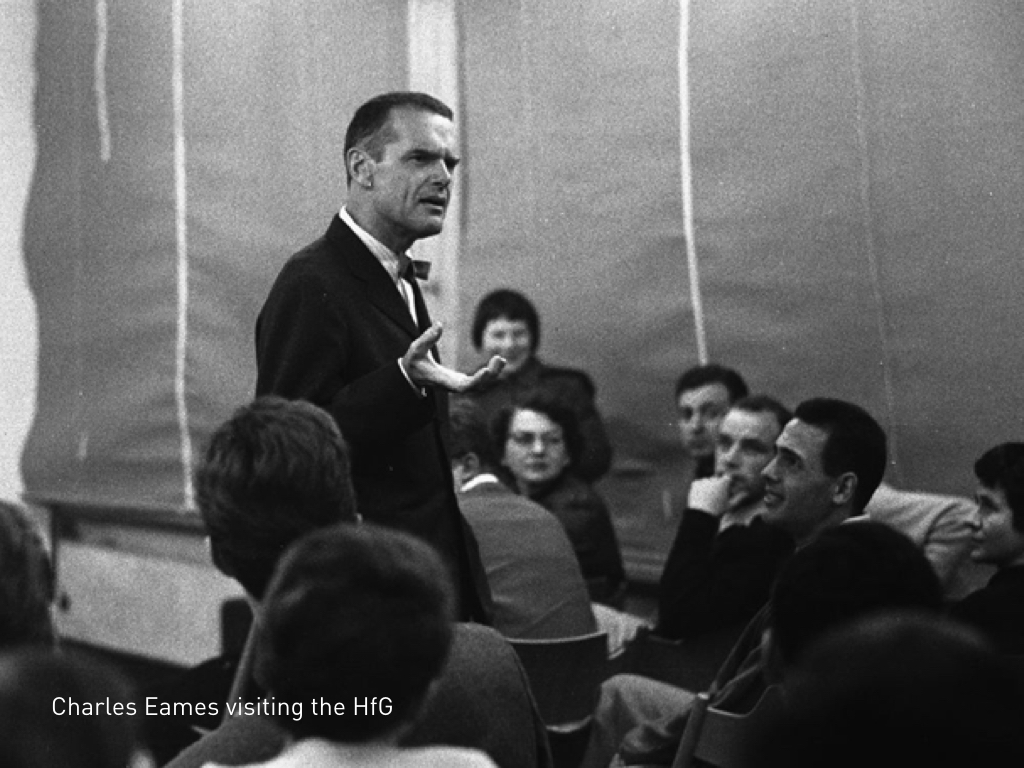In many ways The Hochschule für Gestaltung Ulm was a fountainhead for the design methods movement and a model for contemporary design education at a global scale. While the Bauhaus is widely recognized for introducing the “heroic” artist/designer persona to practical arts schooling, Ulm (also known as HfG) offered systems thinking and integrated solutions to more complex problem definitions.
Founded in 1953, Ulm was born out of a desire to combat the ideology of Nazism. “Die Wesse Rose” was a Nazi resistance group begun in 1942 by Hans and Sophie Scholl, Alexander Schmorell, Christoph Probst, and Willi Graf at University of Munich. In 1941, Otl Aicher, a close childhood friend of the Scholl’s and eventually a founding professor at Ulm, inspired the literary journal “Windlicht” (“Light in a storm”). The philosophical circle released three publications of essays, poems, reflections, and drawings with a decidedly anti-Nazi ethos based on the free-thinking of Aristotle, Plato, and St. Thomas Aquinas. Shaken by the eventual arrest and execution of his dear friends by the Nazi regime, Aicher began to formulate serious ideas on society and design, on “the interconnection of thinking and doing.” [1]
“How far can a conviction be remote from its effect? Basic conviction is not sufficient to replace the logic of doing. Thinking becomes obvious only by acting…The responsibility for what we are thinking and doing we have to carry individually. The state cannot assist in that. Through this responsibility, therefore, a demand for autonomous and independent thinking and doing emerges.”
Aicher was a native son of Ulm. He used his activism to embrace the rebuilding of his city after the war. The Hans and Sophie Scholl Foundation was formed to honor them and inspired creative thinking and activity in the morally depleted post-war Germany. The HfG was financially backed by the German government, European Industry, European aid groups, and American interest groups.
Max Bill was the school’s first Rector. Aicher, Tomás Maldonado, and Horst Rittel later joined the faculty and became influential teachers. Ulm attracted many significant visiting designers including Charles and Ray Eames, Buckminster Fuller, Norbert Weiner (the inventor of Cybernetics), and Swiss graphic designer Josef Muller-Brockmann, among others. In the 1960s, Rittel and industrial designer Bruce Archer brought more analytical “design science” techniques to the program, while Aicher and Maldonado resisted them favoring the ideology behind “semiotics” or the balance between art and science. Following Bill, Tomás Maldonado inspired a more methodological, structured, and process-oriented approach to design (away from the artistic “hero” of the Bauhaus). He encouraged his faculty to integrate broader contexts into design problems (i.e., sociology, psychology, and technology). Maldonado’s approach was deeply integrative and his ideas produced the first curriculum that taught comprehensive design systems, the design of multiple touchpoints, and how to create experiences that were compelling, useful, usable to people.
The course model was rather simple: in the first year, everyone took basic courses to learn technical aspects of design trades such as photography, woodshop, writing, drawing, geometry, presentation, and mathematics. Then they chose a focus area for the next 2 years such as Visual Communication, Product Design, Architecture, etc.. During their last year they focused on a thesis project. Sciences were integrated throughout their studies (Economics, Politics, Philosophy, Sociology, Psychology).
The practice of creating relationships with companies to produce actual products and communications was another HfG innovation. German brands such as Braun, and Lufthansa sought fresh ideas from the new breed of designer in post-war Germany. These collaborations contributed to design languages that carry on today.
Ulm was an experimental institution. Its curriculum went through many iterations which contributed to internal conflicts and demise after they became more public. The school lost much of its funding, closing in 1968. The emigration of key faculty to universities such as Berkeley produced the union of Horst Rittel with Melvin Webber. Their research led to the definition of “wicked problems” and together they wrote one of the most important texts in contemporary design education and design thinking: Dilemmas In A General Theory of Planning. [2]
[Images found via Google, Foundation Ernst Scheidegger Archive, HfG-Archive Ulm among others.]



